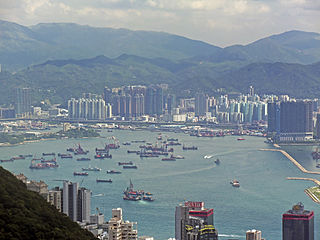 The Port of Hong Kong holds the top position in Hong Kong’s maritime sector in both total tonnage and container throughput, and the facility will continue demonstrating growth in 2015 after improving its performance in the previous year, forecasts a new report by Business Monitor International.
The Port of Hong Kong holds the top position in Hong Kong’s maritime sector in both total tonnage and container throughput, and the facility will continue demonstrating growth in 2015 after improving its performance in the previous year, forecasts a new report by Business Monitor International.
The “Hong Kong Shipping Report” for 2015 projects further growth at the port over the rest of the medium term.
For 2015, tonnage throughput is forecast to grow 5%, and to increase 22% over the medium term. Container throughput is estimated to expand by 2%, and by 9% over the medium term.
BMI predicts Hong Kong total trade growth for the year at 3.85%.
As for risks to the outlook, “the major short-term risk to our outlook for Hong Kong is presented by a potential weakening in demand outlook for Europe, the US and China,” particularly if the mainland economy experiences a sharper-than-expected slowdown, or the sovereign crisis in Europe takes a turn for the worse, it said.
On the competition, meanwhile, BMI noted: “Although up until 2012 it was managing to weather the competition from the development of Shenzhen as China’s second largest container port and despite the close proximity of the two facilities was managing to retain its lead, Hong Kong [has] now lost it to Shenzhen.”
Nonetheless, BMI said long-term expansion plans for the port of Hong Kong will ensure it remains among the world’s top sea hubs.
HK port development study released
Another new study backs up the findings of the BMI report of a diminishing slice of cargo tonnage from China.
The “Study on the Strategic Development Plan for Hong Kong Port 2030” by BMT Asia Pacific highlighted the positioning, competitiveness, and future trends in the industry, “to which the current facilities must respond.”
It also identified the trend of a shrinking share of South China cargo via Hong Kong Port (HKP). “As a result of competition from other South China ports, HKP’s market share for South China cargo has declined, but the rate of decline is diminishing,” the report revealed.
The paper also found that new terminals in the region aren’t needed to keep the sector competitive.
According to the report, growth of international transshipment at HKP is driven by growth in world trade, more common use of transshipment as the mode of operation in container shipping, and efforts by HKP terminal operators to attract international transshipment.
“HKP is already competitive and has a captive market for foreign carriers looking to transship China-related cargo, but may also compete as an international transhipment hub over the wider Asia region,” it added.
According to the report, HKP will maintain a certain level of market share of the South China cargo base due to increasing labor costs and the possible RMB appreciation impacting other South China ports, and therefore enhancing cost competitiveness of the port.
The Hong Kong government has studied the feasibility of constructing a further container terminal (CT10), to complement the existing KTCT terminals 1-9, but the report said existing infrastructure must be better used first.
“Only if measures to enhance capacity cannot accommodate forecast throughput, should consideration be given to construction of CT10. However, review of the demand and supply assessments indicates that CT10 will not be required before 2030.”
However, nearby capacity at Kwai Tsing Container Terminals will be needed prior to 2030.
Photo: Daniel Case




